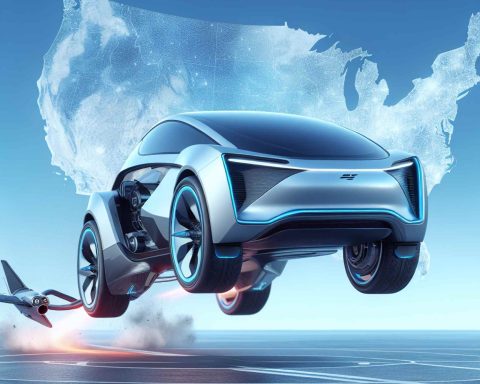NVIDIA Corporation, a key player in the realm of graphics processing and AI advancements, is seizing the moment as it continues to deliver standout financial performance. With its sights set on the future, NVIDIA is gearing up the production of its upcoming Blackwell architecture, and industry experts remain optimistic about the company’s trajectory despite temporary hurdles.
For the third quarter of fiscal year 2025, NVIDIA’s revenue skyrocketed by 94% year-over-year, reaching a remarkable $35.1 billion. This surge was largely fueled by the massive demand for the company’s data center offerings, including the innovative Hopper GPU architecture tailored for AI and high-performance computing needs.
Looking forward, NVIDIA predicts a revenue increase to $37.5 billion for the fourth quarter, marking a 7% rise sequentially. While some had anticipated even higher numbers, this forecast still mirrors solid market interest in NVIDIA’s products.
The company’s gross margins might encounter short-term pressure, with expectations set in the low 70% range for the first half of fiscal year 2026. However, optimism abounds as margins are projected to recover to the mid-70s later in the year, aligning with the scale-up of Blackwell production.
NVIDIA’s data center segment emerged as a star performer, showcasing a 17% quarter-over-quarter revenue boost in Q3. Meanwhile, the highly anticipated Blackwell GPU architecture promises notable performance advancements for AI workloads as it prepares for mass production in the latter part of fiscal year 2025.
Despite facing competition and geopolitical challenges, NVIDIA’s technological leadership and robust ecosystem provide a solid foundation for sustained success in the rapidly expanding AI sector. As businesses worldwide continue to integrate AI systems, the demand for NVIDIA’s advanced chips and solutions positions the company for substantial growth.
NVIDIA’s Path Forward: Unveiling Blackwell Architecture and Strategic Growth
As a leading figure in graphics processing and artificial intelligence (AI), NVIDIA Corporation is charting a promising course for the future. The company’s robust financial performance, along with the forthcoming Blackwell architecture, highlights NVIDIA’s strategic direction and industry impact.
What is NVIDIA’s Blackwell Architecture?
NVIDIA’s upcoming Blackwell architecture is an advancement in AI and graphic processing units (GPUs), promising significant performance improvements for AI workloads. This architecture is anticipated to enhance computational efficiency and speed, further cementing NVIDIA’s position in the AI sector.
Financial Achievements and Predictions
For the third quarter of fiscal year 2025, NVIDIA experienced a 94% year-over-year increase in revenue, reaching $35.1 billion. This remarkable growth was primarily driven by the demand for NVIDIA’s data center solutions, particularly its Hopper GPU architecture, which is designed for AI and high-performance computing.
Looking ahead, NVIDIA forecasts a 7% increase in revenue for the fourth quarter, amounting to $37.5 billion. Although some may have expected even higher figures, this projection underscores solid market demand for NVIDIA’s products.
Challenges and Margins
NVIDIA anticipates some pressure on its gross margins in the short term, with expectations in the low 70% range during the first half of fiscal year 2026. However, recovery is expected by the latter half, with margins projected to return to the mid-70s, coinciding with the scale-up of Blackwell production.
Market Dynamics: Opportunities and Competition
The data center segment remains a significant growth area for NVIDIA, reporting a 17% increase in revenue quarter-over-quarter in Q3. Despite challenges from competitors and geopolitical factors, NVIDIA’s technological innovations provide resilience.
Industry Trends and Insights
The expansion of AI technology across industries is fueling demand for NVIDIA’s cutting-edge chips and solutions. The company’s continued innovation in AI and high-performance computing is expected to drive substantial growth and maintain its market leadership.
Conclusion
NVIDIA’s commitment to advancing its GPU architecture, alongside strategic financial planning, positions it well for ongoing success amid a rapidly changing technological landscape. As AI adoption increases globally, NVIDIA’s innovations and market strategies will likely keep it at the forefront of the industry.


















